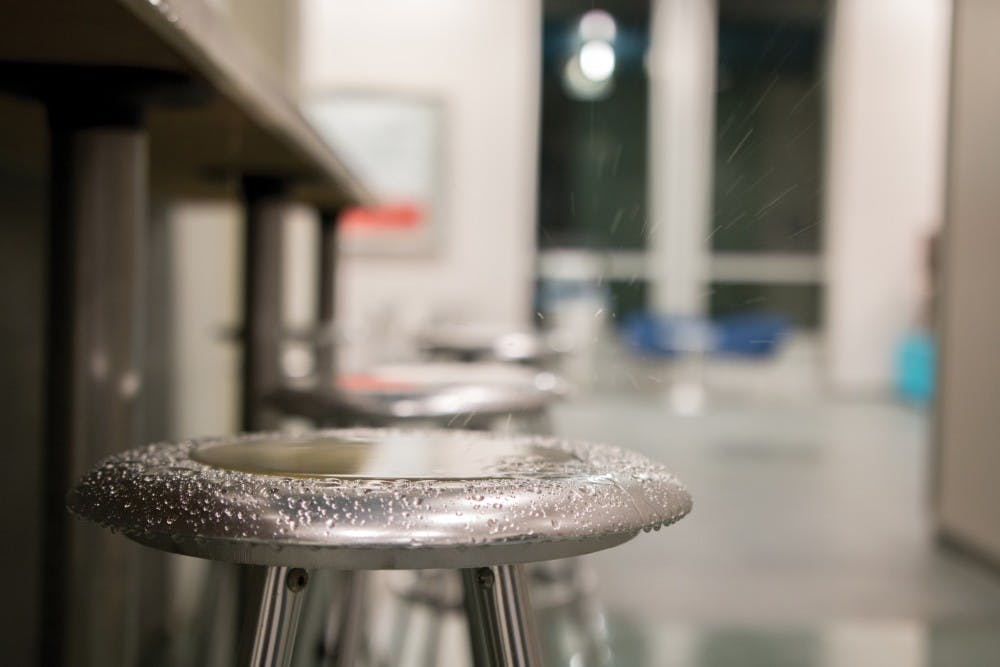
In the last few years, students in the high rises have had their semesters upended by hot water and flooding problems. Now, some students report similar problems at Penn’s newest dorms — New College House and Hill College House, which cost some $200 million to build.
College freshman Andrew Guo is a resident at Hill and said he and three of his friends have all noticed a shortage of hot water in recent weeks. More specifically, they have noticed that showers at Hill will periodically turn cold for several days.
“I go in there, and it was fine for, you know, two minutes. Then all of the sudden it was getting super cold,” Guo said. “So I got out of that shower, moved over to the next stall, which was OK for about twenty seconds, before it got cold with max-heat turned on. And then I had to run all the way to the bathroom in a different corner of the building, just in a towel, and even those bathrooms were still cold.”
Despite incidents like Guo’s, Penn administrators insisted that they take a holistic approach when constructing Penn's water systems.
Benedict Suplik, director of Engineering and Energy Planning for Facilities and Real Estate Services, said Penn works to keep its heating and water systems uniform in order to reduce costs and make it easier for maintenance staff to make repairs.
“When [the maintenance staff] sees the same type of system, here, here and here, they know how to fix it faster,” Suplick said.
By student accounts, however, this can mean that faulty aspects of older dormitories do not get fixed in newly-renovated ones.
Penn collaborates with the architecture team that is designing a project’s utility systems, said Suplick. He added that the two parties follow “a fairly subscribed, step-by-step” process, where they discuss the University’s expectations.
One of these expectations involves cost. Executive Director of Design and Construction Management Michael Dausch said Penn considers the upfront costs of installing different heating and water systems, but takes “life-cycle” costs as a priority. This figure accounts for the energy consumption and maintenance expenses associated with different utility systems.
“What developers typically do, is they’re going to pick the cheapest possible system, because they’re going to rent that space out, and their occupants are typically paying the costs of the maintenance and the cost of the energy consumption,” Dausch said. “But we operate our own buildings, so we’re not just looking at initial costs.”
Another priority Penn sets when designing new heating, ventilation and air conditioning systems is uniformity throughout campus.
In the case the heating or hot water in a residence malfunctions, Dausch said there are features incorporated into the system design that mitigate any damage. He noted that the hot water used for heating individual dorm building runs through building-specific pumps and control systems. This way, Dausch said, any major leaks will only affect an isolated area, and not the whole campus.
But despite these provisions, Suplick said that Penn's most recently renovated dorms, Hill and NCH, make use of similar HVAC and hot water systems as other much older residential buildings across campus.
At NCH this semester, Penn’s precautions seem to be working. College sophomore and NCH resident Justin Iannacone, who also lived in NCH last year, said he does not notice the same hot water problems this year that he did last year. Several other students living at NCH contacted by the Daily Pennsylvanian also reported not having noticed any issues with hot water this semester.
“Last year it seemed it took a lot longer to fix all the hot water problems and to get all the AC and heating figured out,” Iannacone said. “But it seems like this year, no one I know has had any problems.”
The Daily Pennsylvanian is an independent, student-run newspaper. Please consider making a donation to support the coverage that shapes the University. Your generosity ensures a future of strong journalism at Penn.
Donate






